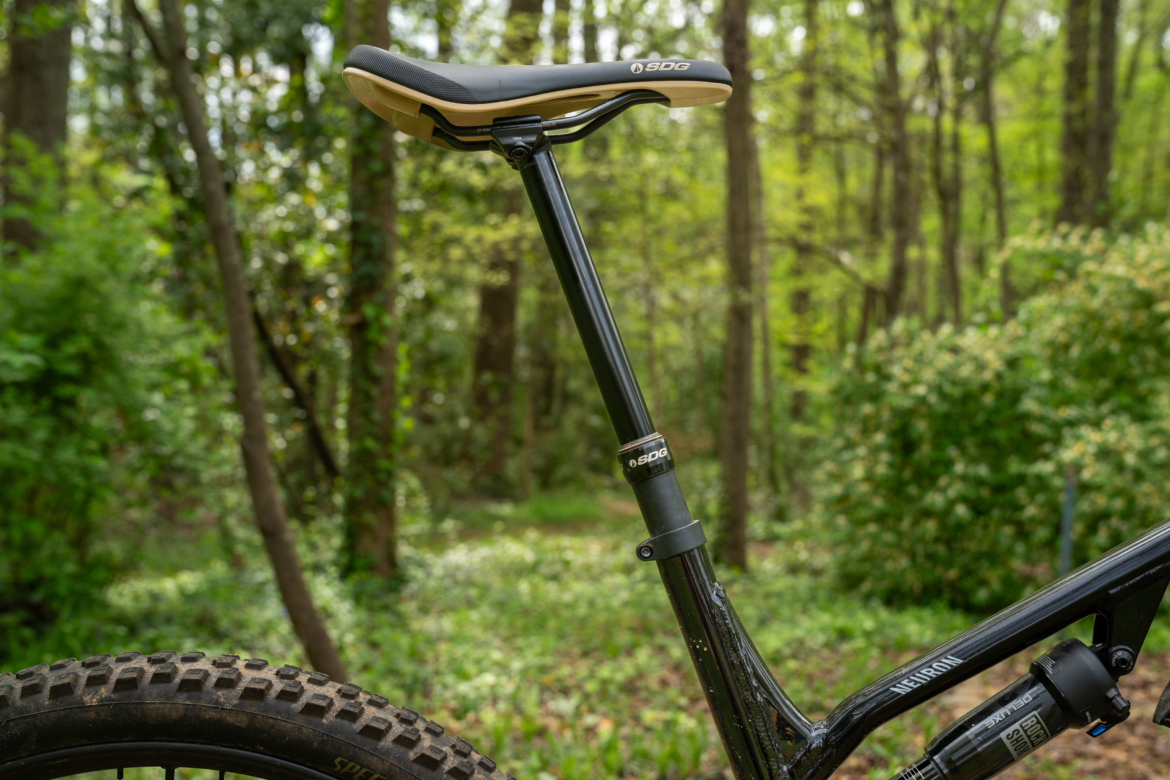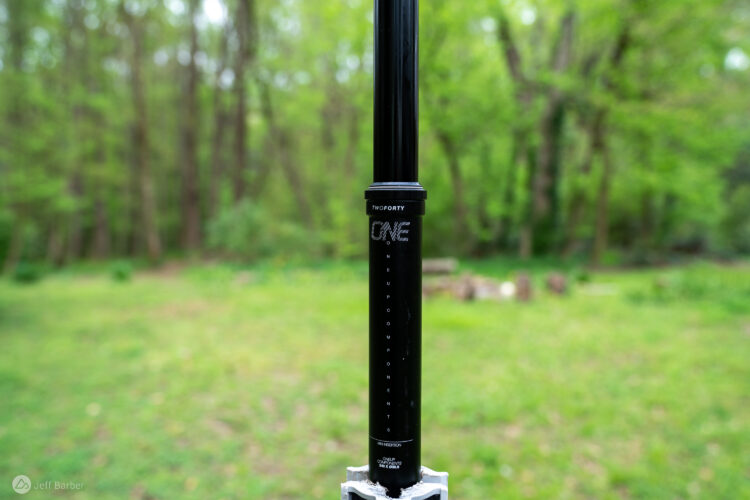
In a 2019 product review, Gerow proclaimed, the “SDG Tellis dropper post works flawlessly.” Last year the brand quietly released a new version of the SDG Tellis to OEM partners including Santa Cruz, Pivot and YT, and today it’s finally available to the public. I’ve been testing the v2 post on my trail bike since last summer, and there’s a lot to like about the updates.
SDG Tellis v2 key specs
- Diameters: 30.9, 31.6, and 34.9mm
- Post travel: 55mm to 230mm, with 5mm, 10mm, and 20mm travel adjust shims included (30.9x200mm version tested)
- Weight: 605g (post with clamp hardware)
- Price: $199.99 (remote lever sold separately)
- Buy from SDG retailers



What’s new with the SDG Tellis v2 dropper post
Staring from the top, the SDG Tellis gets an updated saddle clamp. I doubt I’m alone in my disdain for pretty much every saddle clamp on the market; not only are most of them awkward to install, they’re also difficult to adjust. This time around SDG moved the bolts to the sides of the post, and canted them at an angle for easy tool access.
I also like the “I-Beam cradle design” that allows you to install a portion of the clamp to the saddle rails, and then attach everything to the post. This means no more fumbling with a handful of bolts and clamp pieces with your head turned upside down while trying to Tetris everything together. The design also makes fore/aft and angle adjustments easier. The only downside I’ve found is that you need to torque the saddle bolts a lot to prevent the saddle angle from shifting during the ride. SDG says to torque the bolts at 12Nm but with that amount I can still force the saddle nose down using only my hands. I needed much more than 12Nm to get the angle to stay put.
SDG has also reduced the heights of the head and the actuator to give riders the maximum amount of drop for a given frame clearance. I tested the 200mm travel version on my XL Canyon Neuron and found that I also could have fit the 230mm version with millimeters to spare. Included travel adjustment shims in 20, 10, and 5mm sizes allow you to reduce the dropper post travel to fit your frame, though there’s no way to add travel beyond the amount listed on the post. My suggestion is to err on the side of a post that might be a little too long and adjust down as necessary using the included shims (though you should also definitely confirm with the SDG website for the best fit).


The SDG Tellis v2 dropper post is said to be more robust this time around too, with a stronger 26mm stanchion and an improved keyway system that features copper shims. I easily blew past the recommended 60-hour service recommendation for my sample yet I found the keyways remained sharp and completely in tact. This is confirmed by the fact that the post has not developed any perceptible side-to-side play.

Maintenance and performance
The Wintek cartridge inside the SDG Tellis dropper post is sealed with a reliable, but slow, return speed. The sealed cartridge, along with name-brand bushings and main seal, promises less need — and opportunity, depending on how you look at it — for maintenance. While the sealed cartridge means you won’t ever have to top off the post with air pressure, it also means you can’t adjust the pressure in the cartridge to increase the return speed.
Share your SDG Tellis review
The post is easy to disassemble at home, and doesn’t even require removing the saddle or taking the post out of your frame. The slow return speed hasn’t bothered me on the trail, though if it did I might try using a lighter-weight grease to speed things up a bit.
I’ve probably put almost a thousand miles on the SDG Tellis v2 dropper post and I haven’t had a single issue, which I can’t say for some of the other dropper posts that I tested on other bikes during the same time period. The biggest issue I run into with a lot of posts is twitchy and sensitive actuators; move the post inside your frame just a smidge, and the remote stops working and you’re forced to push and pull on the cable and housing until you get everything just so. Or worse, just resting a finger on the remote results in a surprise drop. The SDG Tellis v2 does seem to take a bit more lever force to actuate the post, but in my experience that’s been a plus.


Pros and cons of SDG Tellis v2 dropper post
Pros
- Lots of diameter and travel options, including some truly long-travel ones
- Robust design and construction
- Easy to maintain
- Reliable performance
- Convenient saddle rail attachment and adjustment
Cons
- Return speed is on the slow side
- Saddle clamp bolts need a lot of torque to prevent slippage
Bottom line
The SDG Tellis v2 dropper post performs reliably, even flawlessly, just like the original. And now it offers riders even more travel thanks to an improved design.
Addendum 4/11/24: SDG says the production model (not tested) is rated for up to 17Nm of torque on the saddle bolts thanks to a hardware swap. Also, the cartridges on the 200mm and 230mm posts have been updated and are said to deliver 12-15% faster return speeds.



















